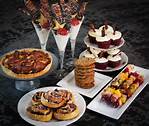 When I was growing up, my mom made liver on a regular basis because she learned it was a good source of iron. So every month or so (thank God it wasn’t more than that!) I choked down the horrid stuff. Then after my siblings and I grew up and moved out, she discovered that it’s also very high in cholesterol and never cooked it again.
When I was growing up, my mom made liver on a regular basis because she learned it was a good source of iron. So every month or so (thank God it wasn’t more than that!) I choked down the horrid stuff. Then after my siblings and I grew up and moved out, she discovered that it’s also very high in cholesterol and never cooked it again.
We’ve all been victims of misinformation when it comes to food—what’s good for us one year may just turn out to be what’s not the next. I can’t tell you how many times I’ve heard the contradictory tug-of-war regarding the benefits/side effects of coffee. But we all know sugar isn’t good for you. It doesn’t take a nutritionist to tell us that. However, even that’s not as simple as it seems.
A couple weeks ago, I had to take an HbA1c test in order to qualify for the healthy incentive rate with my medical insurance. This test measures the blood glucose concentration over the past three months—so a history of sorts. Since I eat what I considered to be very healthy (spinach/chard drinks in the mornings, salad for lunch every day and lots of green, leafy vegetables) I was shocked that my results came back tagged as High. Too high, it seems, to get a break on my health insurance. Aside from my supposed healthy eating, I work out every day, sometimes twice a day, and my weight is on the low end of normal. So imagine my surprise.
After the initial shock wore off, I started reading labels to see how much sugar I’ve been consuming—which I imagine is what caused me to test higher than is recommended. According to the American Heart Association, the average adult should strive to consume no more than 25 grams of added sugar—sugars that are not naturally occurring (like what you find in fruit.) Each gram of sugar is four calories, so this equals about 100 calories. The World Health Organization says sugar should be no more than 10% of our daily calories—which is closer to about 18 grams for me. I was stunned to discover that the dried cranberries I like to put on my salad contains 29 grams of sugar in one serving! So, although I think I’m eating a healthy salad, I’m actually consuming more than the maximum amount of sugar for the day with that one meal.
When I realized this, I started pulling foods from the pantry and refrigerator like a crazy person, adding up the grams of sugar I’ve been consuming on a regular basis. Honey has 16 grams of sugar in one serving; yogurt, 9; soymilk, 14; 1 tsp. of raw sugar, 5. Add all that up, and I’ve been consuming more than 50 grams of sugar each day, and none of it came from carbohydrates and sugary treats. No wonder my HbA1c test came back high.
And just to complicate things a little more, every food has a glycemic index level, which plays into the test. Foods with a higher glycemic index level will increase the glucose in your body, while foods with a lower level will have no effect or may even help lower it. Carbohydrates (potatoes, rice, bread, cereal, pasta, etc.) breaks down as sugar in the body, so even if you don’t add sugar to these foods, it’s like you’re consuming sugar anyway. And if you want to complicate it further, look into glycemic load. All in all, I’m not nearly as healthy as I thought.
Americans eat an average of 22 teaspoons of sugar per day—equivalent to 355 calories—or 37 extra pounds a year. It’s easy to see why we’re a nation of obese people. But on top of that, we have an increase in heart disease and diabetes. Unless you’re proactive about health education, it’s easy to be misguided. The benefits or health risks of coffee may be up for debate, but none of us can deny the health risks of consuming sugar. So, I urge you to read labels, do your homework, and make wiser choices. It might just save your life.





